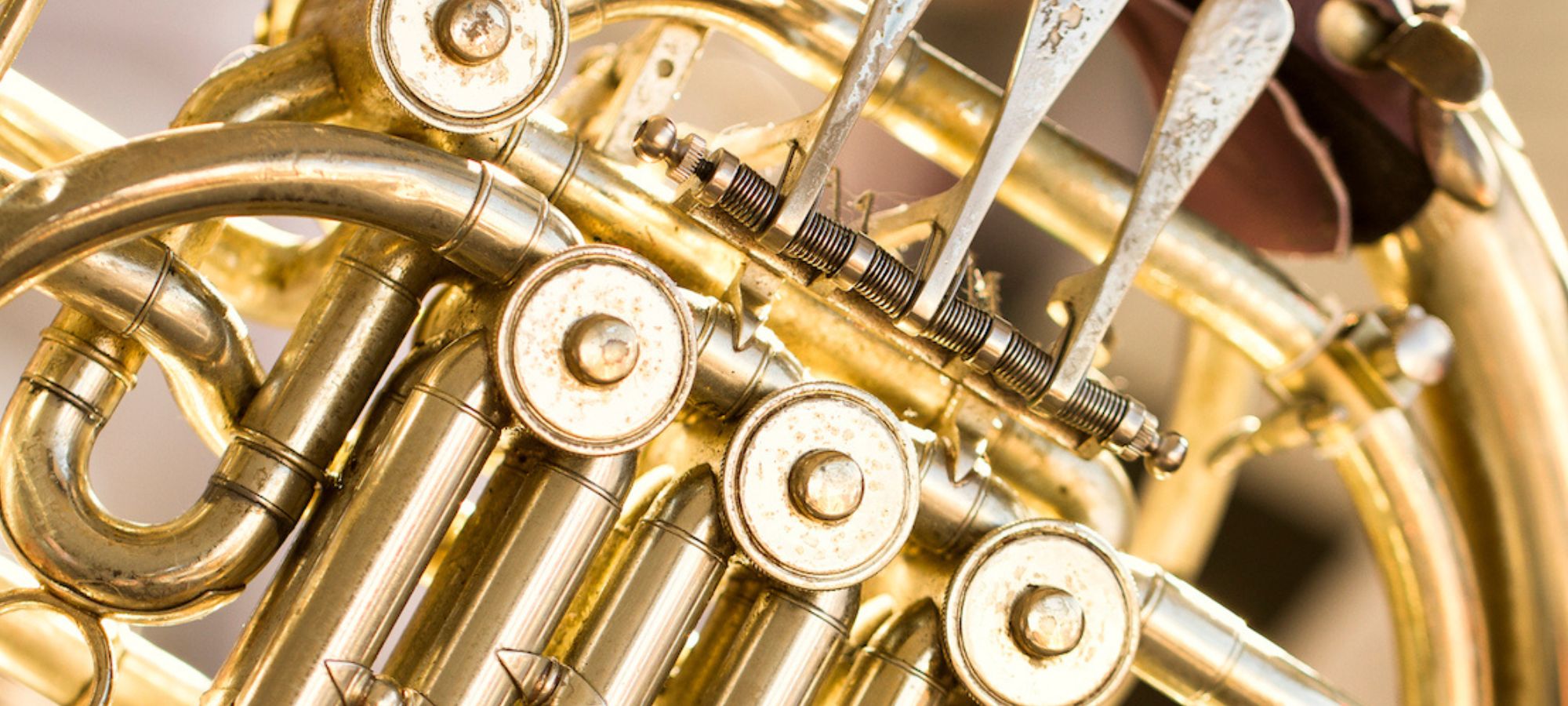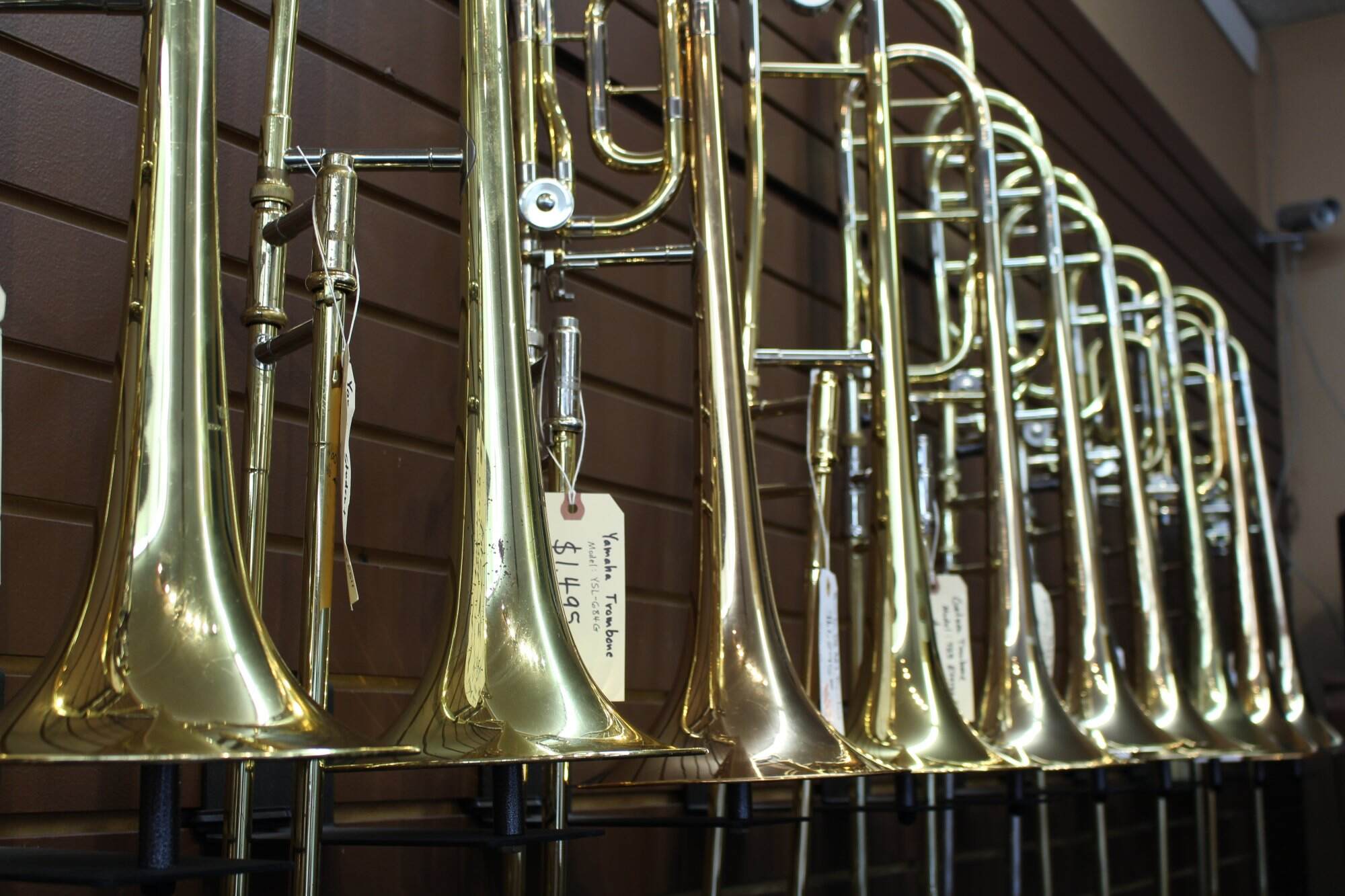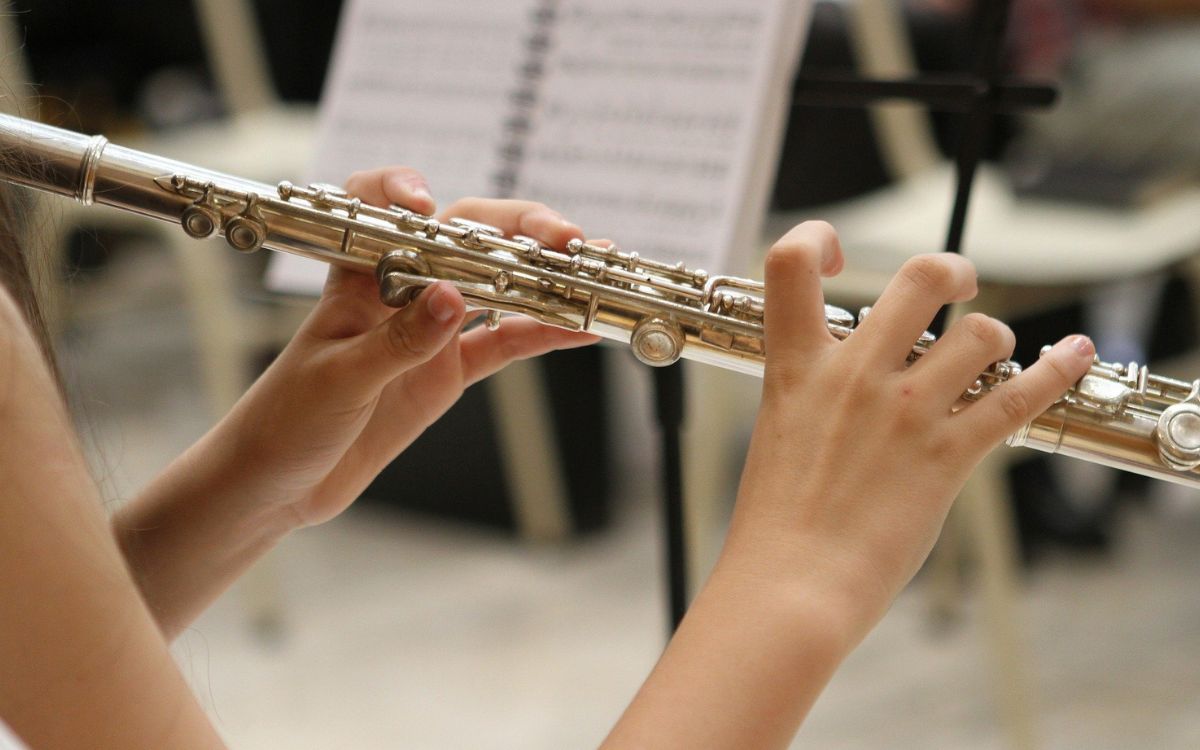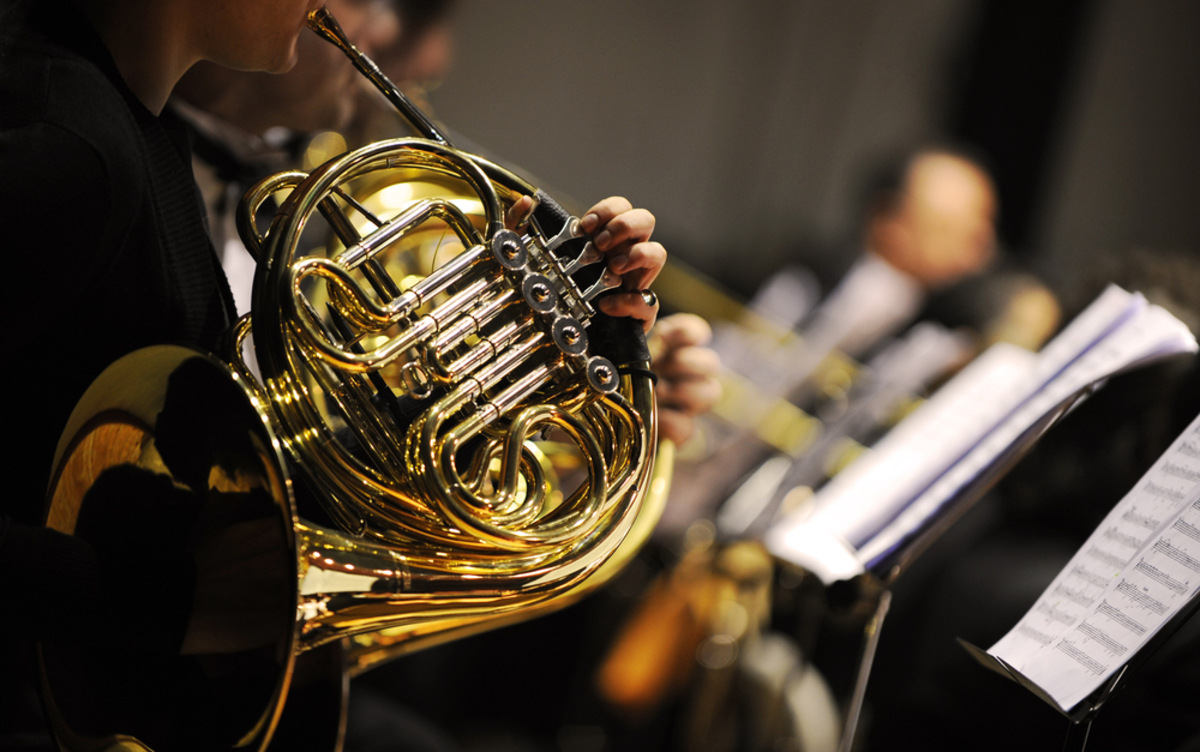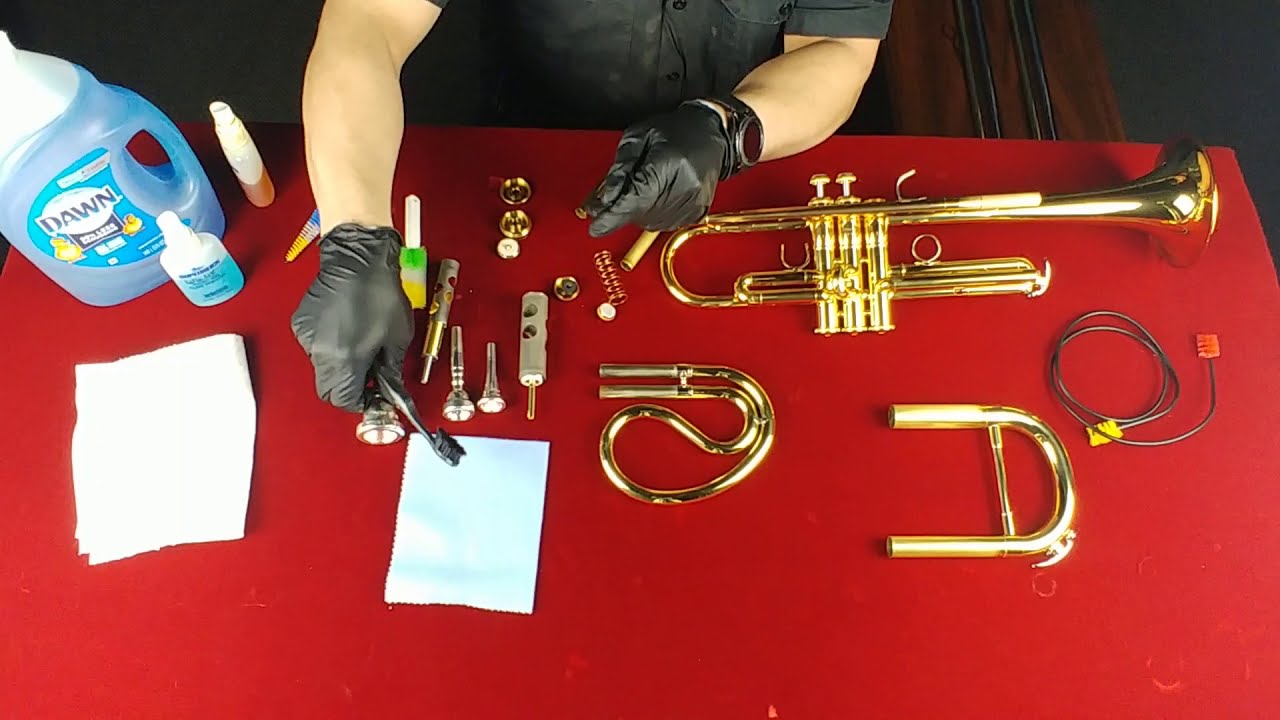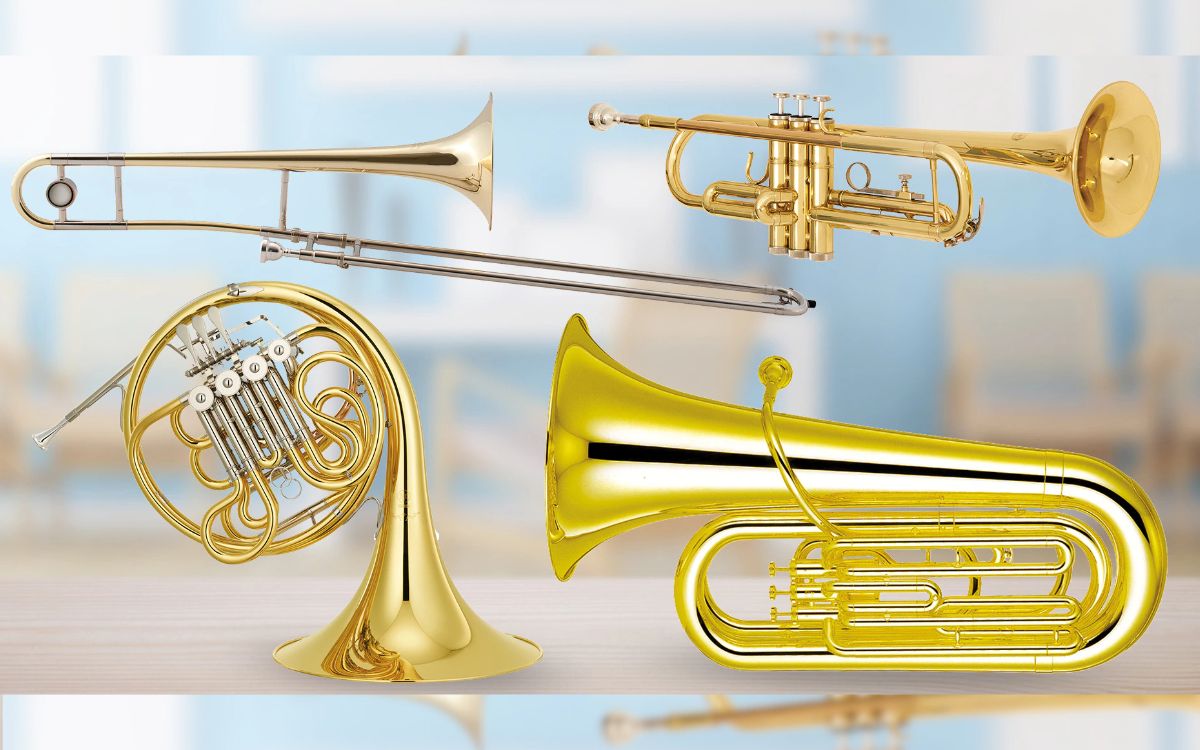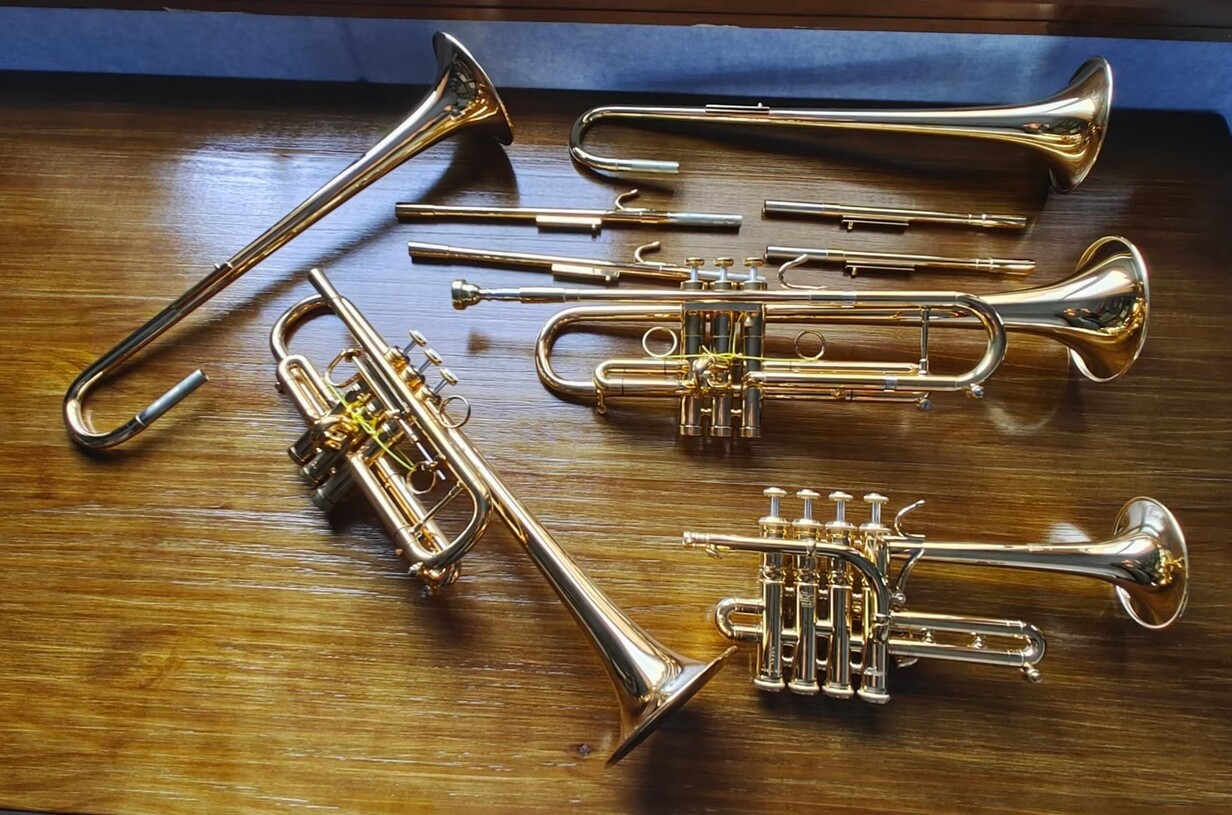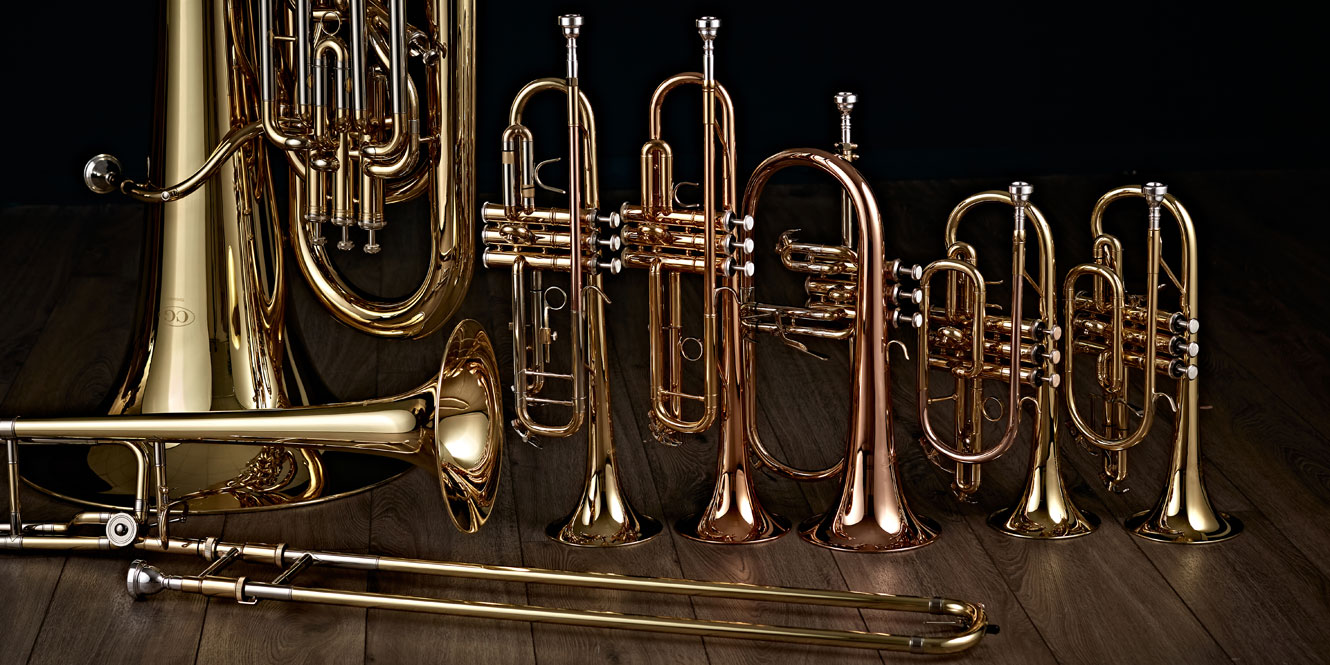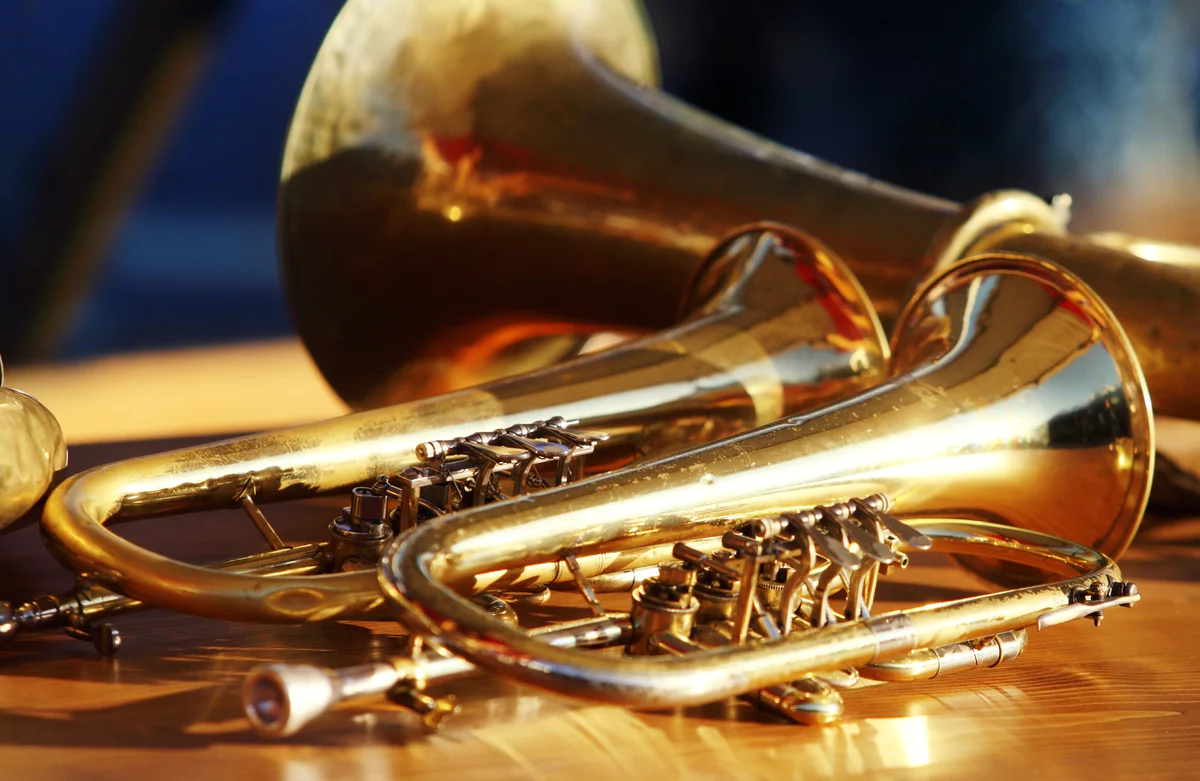Home>Instruments>Brass Instruments>How To Remove Corrosion From Brass Instruments


Brass Instruments
How To Remove Corrosion From Brass Instruments
Published: January 15, 2024
Learn how to effectively remove corrosion from brass instruments with our step-by-step guide. Keep your brass instruments looking and sounding their best with these easy cleaning techniques.
(Many of the links in this article redirect to a specific reviewed product. Your purchase of these products through affiliate links helps to generate commission for AudioLover.com, at no extra cost. Learn more)
Table of Contents
Introduction
Brass instruments are not only beautiful and captivating to listen to, but they also require proper care and maintenance to ensure their longevity and optimal performance. One common issue that brass instrument players face is corrosion. Over time, brass instruments can develop a layer of tarnish and corrosion, which not only affects the instrument’s appearance but also its sound quality.
Corrosion occurs when the metal reacts with moisture, air, and other environmental factors. It can be frustrating and disheartening to see your beloved brass instrument succumb to corrosion. However, with the right knowledge and techniques, you can effectively remove corrosion from your brass instrument and restore its original shine and playability.
In this article, we will explore the different methods and materials you can use to remove corrosion from brass instruments. Whether you prefer using household ingredients or commercial cleaners, we have got you covered. We will also provide tips on how to prevent brass corrosion in the future, so you can enjoy playing your brass instrument for years to come.
Without further ado, let’s dive into the world of brass instruments and learn how to tackle corrosion head-on.
Understanding Brass Corrosion
Before we jump into the methods of removing corrosion from brass instruments, it is important to understand how and why corrosion occurs in the first place.
Brass is an alloy composed primarily of copper and zinc. Copper provides the instrument with its rich tone, while zinc adds durability and strength. However, both copper and zinc are susceptible to corrosion when exposed to certain elements.
The main factors that contribute to brass corrosion include:
- Moisture: Water or high humidity levels can accelerate the corrosion process. Moisture can penetrate the tiny crevices and pores in the brass, leading to the formation of tarnish and patina.
- Air: Oxygen in the air reacts with the metal, causing oxidation. This results in the formation of a greenish-blue layer of corrosion that can be unsightly and affect the instrument’s playability.
- Acids and Chemicals: Exposure to acidic substances such as sweat, saliva, cleaning agents, or even certain foods can contribute to brass corrosion. These substances can break down the protective layer on the brass surface, making it more susceptible to corrosion.
It is important to note that brass corrosion is a natural process and cannot be completely prevented. However, regular cleaning and maintenance can slow down the corrosion process and keep your brass instrument in top condition for longer.
Now that we have a better understanding of the causes of brass corrosion, let’s move on to the materials and methods that can help remove this stubborn tarnish.
Materials Needed for Removing Brass Corrosion
Before you begin the process of removing corrosion from your brass instrument, it’s essential to gather the necessary materials. Depending on the method you choose, you may need different items. Here is a list of commonly used materials for removing brass corrosion:
- Lemon Juice: Lemon juice contains citric acid, which helps break down the corrosion on brass instruments.
- Salt: Salt acts as an abrasive and aids in removing stubborn tarnish from brass surfaces.
- Vinegar: Vinegar is acidic and can help dissolve corrosion on brass instruments.
- Baking Soda: Baking soda is a mild abrasive and can be used to gently scrub away tarnish from brass surfaces.
- Commercial Brass Cleaner: There are various commercial brass cleaners available on the market specifically designed to remove tarnish and corrosion from brass instruments.
- Clean Cloth: A soft, lint-free cloth is essential for wiping away tarnish and polishing the brass surface.
- Soft-bristled Brush: A soft-bristled brush, such as a toothbrush, can be used to gently scrub away corrosion from hard-to-reach areas.
- Warm Water: Warm water will be needed for rinsing off the cleaning solution and residue.
It’s important to note that not all methods require the same materials. Depending on the severity of the corrosion and your personal preference, you may choose one method over another. Additionally, always ensure that the materials you use are safe for your specific brass instrument and won’t cause any damage.
Now that you have gathered all the necessary materials, let’s move on to preparing your brass instrument for cleaning.
Preparing the Brass Instrument for Cleaning
Before you begin the process of removing corrosion from your brass instrument, it is crucial to properly prepare it for cleaning. By following these steps, you can ensure that the cleaning process is effective and safe for your instrument:
- Disassemble the Instrument: If possible, disassemble your brass instrument into its various parts. This will allow for more thorough cleaning and access to hard-to-reach areas that may be affected by corrosion.
- Remove Excess Grime: Use a soft cloth to gently wipe away any loose dirt, dust, or grime on the surface of the instrument. Removing this debris will make the cleaning process more effective.
- Protect Delicate Parts: Before applying any cleaning solution, protect delicate parts, such as valves or keys, by covering them with a thin layer of petroleum jelly or a specialized instrument lubricant. This will prevent the cleaning solution from damaging these sensitive components.
- Choose an Appropriate Cleaning Method: Determine which cleaning method you will use based on the severity of the corrosion and the materials you have available. Refer to the following sections for detailed instructions on each method.
Remember, each brass instrument is unique, and it is important to refer to the manufacturer’s guidelines or consult with a professional if you are unsure about the appropriate cleaning process for your specific instrument.
Now that your brass instrument is prepped and ready, let’s dive into the various methods of removing corrosion, starting with using lemon juice and salt.
Method 1: Using Lemon Juice and Salt
One common and effective method for removing corrosion from brass instruments is by using a mixture of lemon juice and salt. Lemon juice contains citric acid, which helps dissolve the corrosion, while salt acts as an abrasive to remove stubborn tarnish. Follow these steps to use this method:
- Create the Cleaning Solution: In a small bowl, mix equal parts of lemon juice and salt to create a paste-like consistency. The amount you need will depend on the size of your brass instrument.
- Apply the Cleaning Solution: Using a soft cloth or sponge, apply the lemon juice and salt mixture onto the corroded areas of your brass instrument. Gently rub the mixture in circular motions, ensuring that you cover all the affected areas.
- Let it Sit: Allow the cleaning solution to sit on the corrosion for about 5-10 minutes. This will give it time to break down the tarnish and make it easier to remove.
- Scrub the Corrosion: After the waiting period, take a soft-bristled brush, such as a toothbrush, and gently scrub the corroded areas. The salt in the mixture will act as a mild abrasive to help remove the tarnish.
- Rinse and Dry: Once you have scrubbed away the corrosion, thoroughly rinse your brass instrument with warm water to remove any residue from the cleaning solution. Dry it with a clean, soft cloth, ensuring that all moisture is removed.
- Polish the Brass: Finally, use a separate, clean cloth to polish the brass instrument to restore its shine and luster. You can use a specialized brass polish or a soft cloth to gently buff the surface in circular motions.
It is important to note that lemon juice may cause slight discoloration on your brass instrument. This is normal and can be easily remedied with the polishing step. Additionally, always test a small, inconspicuous area of your brass instrument before applying the cleaning solution to ensure compatibility.
Now that you know how to use lemon juice and salt to remove corrosion, let’s explore another method involving vinegar and baking soda.
Method 2: Using Vinegar and Baking Soda
If you prefer an alternative method to remove corrosion from your brass instrument, using vinegar and baking soda can be an effective option. Vinegar is acidic and helps dissolve the corrosion, while baking soda acts as a gentle abrasive to remove tarnish. Follow these steps to use this method:
- Create the Cleaning Solution: In a small bowl, mix equal parts of vinegar and baking soda to form a paste-like consistency. You may need to adjust the amounts depending on the size of your brass instrument.
- Apply the Cleaning Solution: Using a soft cloth or sponge, apply the vinegar and baking soda mixture to the corroded areas of your brass instrument. Ensure that you cover all the affected areas and gently rub the solution in circular motions.
- Let it Sit: Allow the cleaning solution to sit on the corrosion for about 10-15 minutes. This will give it ample time to break down the tarnish and make it easier to remove.
- Scrub the Corrosion: After the waiting period, take a soft-bristled brush, such as a toothbrush, and gently scrub the corroded areas. The baking soda in the mixture will act as a mild abrasive, aiding in the removal of tarnish.
- Rinse and Dry: Thoroughly rinse your brass instrument with warm water to remove any residue from the cleaning solution. Ensure that all cleaning solution and residue are completely washed away. Dry the instrument with a clean, soft cloth.
- Polish the Brass: Use a separate, clean cloth to polish the brass instrument, restoring its shine and luster. You can use a specialized brass polish or simply buff the surface with a soft cloth in circular motions.
It’s worth noting that vinegar has a strong odor, so make sure you work in a well-ventilated area. Additionally, always test a small, inconspicuous area of your brass instrument before applying the cleaning solution to ensure compatibility.
Now that you know how to use vinegar and baking soda to remove corrosion, let’s explore the third and final method, which involves using a commercial brass cleaner.
Method 3: Using Commercial Brass Cleaner
If you prefer a more convenient and specialized approach, using a commercial brass cleaner can be an effective method for removing corrosion from your brass instrument. These cleaners are specifically formulated to dissolve tarnish and restore the shine of brass. Here’s how to use a commercial brass cleaner:
- Select a Suitable Brass Cleaner: There are various commercial brass cleaners available on the market. Choose a reputable brand that is specifically designed for brass instruments.
- Read and Follow the Instructions: Carefully read and follow the instructions provided by the brass cleaner manufacturer. Each product may have specific application methods and safety precautions.
- Apply the Brass Cleaner: Apply the brass cleaner onto a soft cloth or sponge. Gently rub the affected areas of your brass instrument, ensuring that you cover all the corroded surfaces.
- Let it Sit: Allow the brass cleaner to sit on the corrosion for the recommended amount of time as stated in the instructions. This will give it time to dissolve the tarnish and loosen the corrosion.
- Scrub the Corrosion: After the waiting period, use a soft-bristled brush to gently scrub away the loosened corrosion. Be careful not to apply too much pressure to avoid scratching the surface of the brass instrument.
- Rinse and Dry: Thoroughly rinse your brass instrument with warm water to remove any residue from the brass cleaner. Ensure that all cleaning solution and residue are completely washed away. Dry the instrument with a clean, soft cloth.
- Polish the Brass: Use a separate, clean cloth to polish the brass instrument, restoring its shine and luster. You can use a specialized brass polish or simply buff the surface with a soft cloth in circular motions.
When using a commercial brass cleaner, it’s crucial to follow the instructions provided by the manufacturer. Avoid using cleaners that are not specifically designed for brass instruments, as they may contain harsh chemicals that could damage the metal. Additionally, always test a small, inconspicuous area of your brass instrument before applying the cleaner to ensure compatibility.
Now that you know how to use a commercial brass cleaner, let’s move on to the important topic of preventing brass corrosion in the future.
Preventing Brass Corrosion in the Future
While it’s essential to know how to remove corrosion from brass instruments, it’s even more crucial to prevent it from occurring in the first place. By following these preventive measures, you can keep your brass instrument in optimal condition and reduce the likelihood of corrosion:
- Proper Handling and Storage: Always handle your brass instrument with clean hands and avoid touching it unnecessarily. When not in use, store the instrument in a protective case to shield it from moisture, dust, and other environmental factors.
- Regular Cleaning and Maintenance: Develop a routine cleaning and maintenance schedule to keep your brass instrument clean and free from corrosion. Remove dirt, grime, and moisture after each use, and periodically clean the instrument using gentle methods such as using a soft cloth or mild soapy water.
- Use a Protective Coating: Consider applying a protective coating or lacquer on your brass instrument to provide an additional barrier against moisture and oxidation. Consult with a professional technician to determine the best type of coating for your specific instrument.
- Monitor Environmental Conditions: Avoid exposing your brass instrument to extreme temperature and humidity conditions. Store it in a climate-controlled environment to minimize the risk of corrosion. Also, be cautious of leaving the instrument in direct sunlight for long periods, as it can accelerate tarnishing.
- Proper Valve and Slide Maintenance: If your brass instrument has valves or slides, make sure to regularly clean and lubricate them. This will ensure smooth and efficient operation, reducing the chances of corrosion caused by friction and moisture buildup.
- Avoid Exposure to Chemicals: Keep your brass instrument away from harsh chemicals, including cleaning agents, solvents, and acidic substances. If your instrument comes into contact with any of these chemicals, immediately rinse it with warm water and dry it thoroughly.
Following these preventive measures will help maintain the integrity and longevity of your brass instrument. It’s always a good idea to consult with a professional instrument technician for additional advice and guidance specific to your instrument.
Now that you have learned how to prevent brass corrosion, let’s conclude our exploration of brass instrument care.
Conclusion
Brass instruments hold a special place in the hearts of musicians worldwide. To keep these beautiful instruments looking and sounding their best, it’s essential to understand how to remove corrosion and prevent its recurrence.
In this article, we have explored various methods for removing corrosion from brass instruments. Whether you choose to use household ingredients like lemon juice and salt, create a cleaning solution with vinegar and baking soda, or opt for a commercial brass cleaner, each method offers a solution to tackle corrosion effectively.
Remember to prepare your brass instrument properly before cleaning, disassembling it if possible and protecting delicate parts. Additionally, always follow the instructions provided by the cleaning products and perform a patch test before applying them to the entire instrument.
To prevent brass corrosion in the future, take proactive steps like proper handling and storage, regular cleaning and maintenance, and monitoring environmental conditions. This will help preserve the instrument’s appearance, playability, and overall lifespan.
Whether you play the trumpet, trombone, French horn, or any other brass instrument, understanding how to care for and maintain it is vital. By implementing the techniques discussed in this article, you will not only keep your instrument looking and performing at its best, but you will also ensure many years of enjoyment and musical expression.
So, grab your cleaning supplies, take the necessary precautions, and give your brass instrument the tender loving care it deserves. With regular maintenance and attention, you will keep corrosion at bay and continue making beautiful music for years to come.

